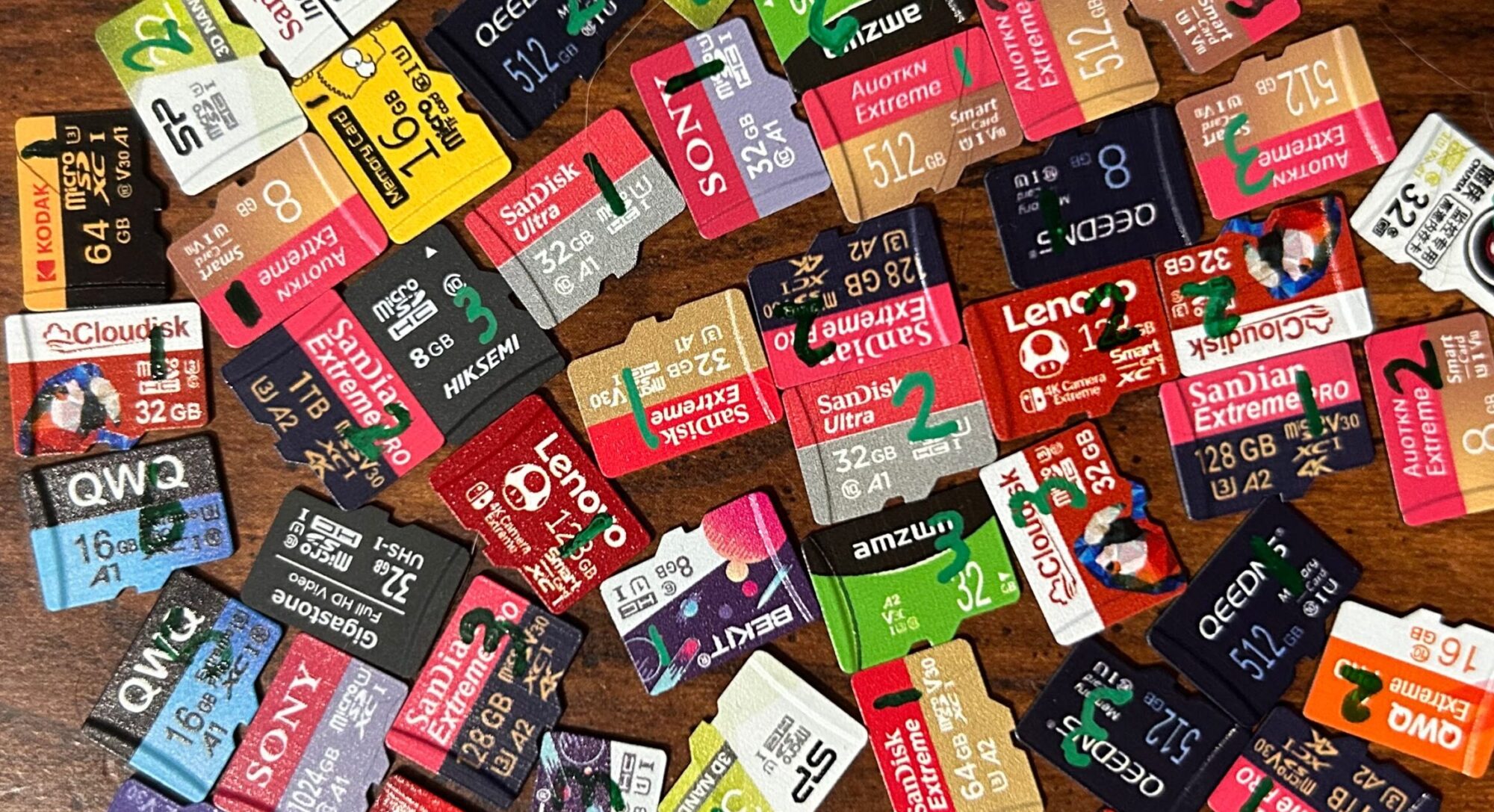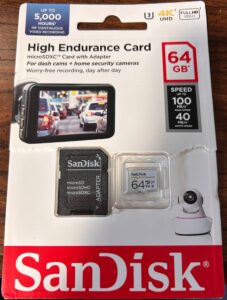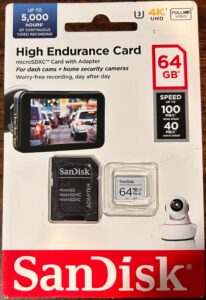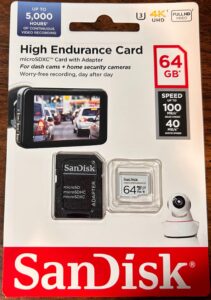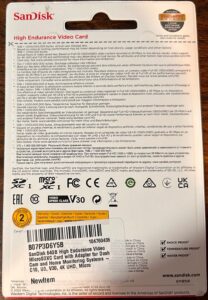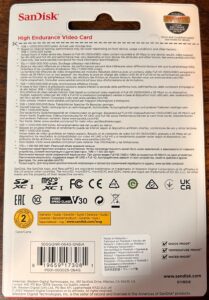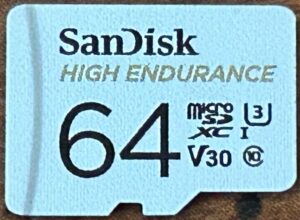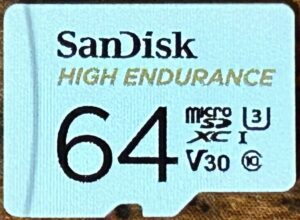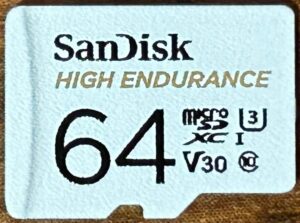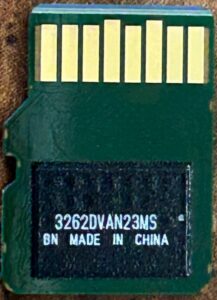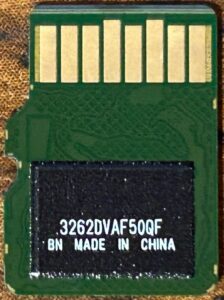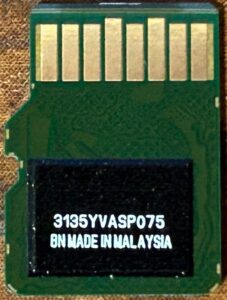- Obtained from: Amazon
- Advertised capacity: 64GB
- Logical capacity: 63,864,569,856 bytes
- Physical capacity: 63,864,569,856 bytes
- Fake/skimpy flash: Skimpy (0.21% skimp)
- Protected area: 134,217,728 bytes
- Adjusted skimp: 0.0019%
- Speed class markings: Class 10*, U3, V30*
- CID data:
- Manufacturer ID:
0x03** - OEM ID:
0x5344(ASCII:SD) - Product name:
0x5348363447(ASCII:SH64G) - Product revision:
0x80
- Manufacturer ID:
* The Class 10 and V30 markings appeared on the card, but did not appear on the packaging.
** This manufacturer ID/OEM ID combination is pretty well known to be associated with SanDisk.
Discussion
At one point in time, I decided that I wanted to try out some “high endurance” cards to see if they really held up better on the endurance tests than other cards. For this, I got both this card and the Samsung PRO Endurance. Initially, I only bought one of each; however, I later decided that I should try to get at least three of each model — at which point I went back and purchased two more of both.
Performance-wise, compared to the other cards I tested, this card did rather well in sequential read/write speeds (with sample #1 getting sequential write speeds that were more than one standard deviation above average), but relatively poorly on random read/write tests. Performance was more than enough to qualify for the Class 10, U3, and V30 markings that it carried. Compared to just the name brand cards, this card performed about average on the sequential write tests, and below average on sequential read and random read/write tests. However, if I stop to think about it for a minute, this makes sense: these cards were probably designed to be used in things like security cameras or dashcams, where video is constantly being recorded to the card and old footage is being overwritten. This type of activity involves a lot of sequential writing, so a card being used for this type of activity benefits from having better sequential write speeds.
Endurance tests are still ongoing for these cards. As of this writing:
- Sample #1’s first error was a 32-sector wide write failure during round 5,402. It has survived 11,596 read/write cycles in total so far.
- Sample #2’s first error was a six-sector wide address decoding error during round 1,547. It has survived 7,391 read/write cycles in total so far.
- Sample #3 suffered an 8-sector wide address decoding error after only 159 read/write cycles. It has survived 7,390 read/write cycles total so far.
The card’s packaging (as well as the product brief on Western Digital’s website) offers up some information on how long this card should be expected to last: it shows “up to 5,000 hours of continuous video recording”. A footnote on the back of the package indicates that this measurement assumes video encoded at 26Mbps — which would come out to 93,600Mb/hour (or 11,700MB/hour). Thus, 5,000 hours of video would consume 58,500,000MB (or 58.5TB) of space. Given the capacity of this device, this comes out to just 916 read/write cycles. This is less than half of the 2,000 read/write cycle target we’re going for (oof). However, on the bright side, all three have made it well past that point (by a factor of 7 or more, as of the time of this writing) and are still going strong.
Overall, this is not a bad card in terms of speed — it gets pretty good write speeds and average read speeds. Previously, I had said that I was disappointed by the fact that it didn’t make it past the 2,000 read/write cycle mark without experiencing any errors — but as time has gone on, I’ve realized that not all of the errors I’m getting are the card’s fault. This is why I switched to using the “time to the 0.1% failure threshold” as my primary endurance metric — and these cards have done pretty well in that regard.
June 4, 2025 (current number of read/write cycles is updated automatically every hour)
